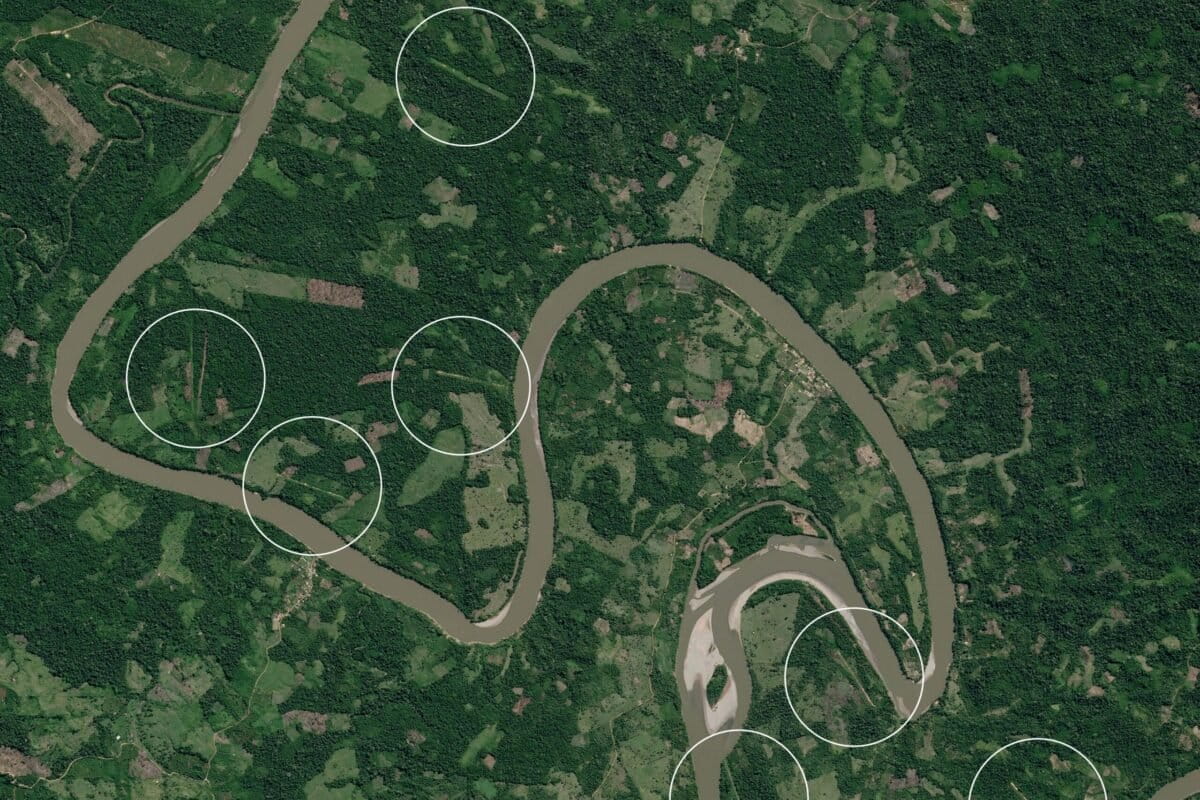- Indonesia has pledged to recognize 1.4 million hectares (3.5 million acres) of Indigenous and customary forests by 2029, a move the government says will curb deforestation and advance Indigenous rights.
- Advocates call the pledge another empty promise, citing years of stalled reforms, including a long-delayed Indigenous Rights Bill and a slow, bureaucratic process that has recognized less than 2% of mapped customary forests.
- Rights groups say state-backed development continues to drive land grabs and forest loss, with a quarter of Indigenous territories overlapping extractive concessions and widespread conflicts linked to the government’s strategic national projects (PSN).
- Critics urge the government to enact legal reforms and recognize Indigenous land beyond the 1.4-million-hectare target, warning that without real action, the pledge will be symbolic rather than transformative.
See All Key Ideas
BELÉM, Brazil — Indonesia has pledged to recognize the rights of Indigenous and customary communities to 1.4 million hectares, about 3.5 million acres, of forests by 2029. It’s a move the government says will help curb deforestation and protect Indigenous rights.
Forestry Minister Raja Juli Antoni made the announcement Nov. 4 at the United for Wildlife Global Summit in Rio de Janeiro, where it was welcomed as a sign of progress. But back home, activists have panned it as yet another promise that will go unfulfilled by a government that continues to displace Indigenous peoples through its development projects.
“Indigenous peoples are the true guardians of Indonesia’s tropical forests — the front line in protecting a sustainable and just planet,” Raja Juli wrote on his X account, adding that recognizing Indigenous rights can cut deforestation by 30-50%.
If achieved, the plan would quadruple the area of officially recognized customary forests in Indonesia, home to the world’s third-largest expanse of tropical rainforest (after Brazil and the Democratic Republic of Congo).
Yet Indigenous groups say the government has made similar pledges before, none of which have materialized. Instead, they say, land grabs for extractive and infrastructure projects — many of them backed by the state — persist, as do policies that make legal recognition difficult.
“The Indonesian government always has big ambitions on climate and deforestation, but its policies are contradictory,” said Muhammad Arman, policy and human rights director at the Indigenous Peoples’ Alliance of the Archipelago (AMAN), the country’s main Indigenous rights advocacy group.
The frankincense forest of the Pandumaan-Sipituhuta Indigenous community in North Sumatra, Indonesia. Image by Barita News Lumbanbatu/Mongabay Indonesia.
Slow recognition
For Indigenous rights advocates, the Indonesian government has been failing Indigenous communities on the policy front since at least 2012. That should have been a landmark year for the movement: the national parliament introduced a bill on Indigenous rights, and the Constitutional Court issued a ruling that customary forests currently claimed by the state must be returned to Indigenous communities.
But there’s been virtually no progress since then. The Indigenous Rights Bill remains stalled in parliament — reportedly at the behest of pro-business parties — despite being listed on the legislative priority docket every year since 2014. Meanwhile, to gain legal recognition for customary forest rights, communities must first be acknowledged by local regulations — a lengthy, costly process requiring paperwork, mapping and the political approval of regional and central governments.
As a result, only 332,500 hectares (821,600 acres) of customary forests have been formally recognized nationwide — less than 2% of the 23 million hectares (57 million acres) mapped by the Ancestral Domain Registration Agency (BRWA), an independent initiative supported by AMAN.
A 2018 report by U.S.-based think tank World Resources Institute (WRI) found that these legal hurdles can delay recognition for years, sometimes decades. The revision of Indonesia’s Forestry Law, now under parliamentary review, offers a chance to simplify the process — if the government seizes it, Arman said. He urged the forestry minister to push for removing the requirement for local regulations and replacing it with a simpler national mechanism.
A man looks up at a merbau tree, which grows abundantly on Enggano Island. Image by Elviza Diana/Mongabay Indonesia.
Contradictions on the ground
While Jakarta touts its climate leadership, Indigenous communities say the government continues to back projects that destroy forests in their territories.
A new report by the Global Alliance of Territorial Communities (GATC) and Earth Insight found that about a quarter of Indigenous territories in Indonesia overlap with logging, oil and gas, and mining concessions — evidence, researchers say, of how extractive industries keep expanding at the expense of Indigenous rights.
This is because land and forests are still viewed primarily as commodities and instruments for commercial production, rather than key ecosystems vital to Indigenous livelihoods and climate stability, according to the Pusaka Foundation, which works with Indigenous communities in Indonesia’s easternmost region of Papua.
“In practice, the state’s governance paradigm has not fundamentally shifted toward advancing Indigenous and local community rights or ensuring equitable forest management,”the NGO said in response to Raja Juli’s statement.
Another major threat comes from the government’s strategic national projects (PSN), a sweeping slate of infrastructure and resource projects in which developers have broad powers to seize land in the name of national interests.
According to the Agrarian Reform Consortium (KPA), a land rights NGO, there were 154 PSN-related land conflicts from 2020 to 2024, affecting 103,000 families and more than 1 million hectares (2.5 million acres) of land. The state-funded National Commission on Human Rights (Komnas HAM) recorded 114 complaints tied to PSN projects during the same period, including forced evictions, violence, environmental degradation, and attacks on journalists.
In a recent statement, U.N. human rights experts described Indonesia’s PSN program as enabling “systemic human rights violations.” They said projects are being implemented without the free, prior and informed consent (FPIC) of affected Indigenous communities, leading to displacement, militarization and environmental damage.
“Some Indigenous Peoples in Indonesia are being pushed to a slow-phased extermination,” the experts warned, adding that those living in voluntary isolation are at “grave risk.”
The Ministry of Defense and the Ministry of Agriculture disseminate information regarding the food estate program at the Uli-Uli village in Ilwayab sub-district, Merauke, South Papua, Indonesia, in August 2024.
Forests destroyed for business interests
The government’s true color is most evident in Papua, where a slew of new policies has recently been introduced to facilitate PSN projects there, including a controversial food estate program.
In South Papua province, a newly created autonomous region, the government has been pressured to revise its spatial plan to expand the cultivation zone — now covering 10.23 million hectares — to accommodate the expansion of PSN projects, Pusaka said in a Nov. 7 statement. The remaining 3.81 million hectares of protected areas can be altered at any time.
Furthermore, the Forestry Minister himself, Raja Juli, recently issued a decree which reallocated nearly 487,000 hectares (1.2 million acres) of forest areas for the food estate program — an area 12 times larger than all customary forests recognized in the entire Papua region since the landmark 2012 Constitutional Court ruling.
As a result, less than 40% of forest areas in the region are zoned for protection and conservation, leaving the majority for extractive economic purposes, Pusaka added.
Since its inception, the food estate program has drawn controversies. In Papua’s Merauke district, the program will see the establishment of 3 million hectares (7.4 million acres) of industrial-scale agriculture, including sugarcane and rice.
So far, the government has allocated 637,420 hectares (1.58 million acres) of sugarcane and bioethanol concessions for 10 companies in Merauke.
Local Indigenous leader Vincent Kwipalo said his land was taken by a neighboring clan and handed to the military for the project without his knowledge.
“I even said to them, ‘Is it because of our skin color and curly hair that you don’t value us? If you consider us part of the republic, then please respect us,’” Vincent said.
Criticism of the project has grown, but Hashim Djojohadikusumo, Indonesia’s climate envoy and brother of President Prabowo Subianto, defended the plan. “Our national food program is nonnegotiable,” he told the Kompas daily in December 2024.
Hashim, who will also represent Indonesia at the U.N. Climate Change Conference (COP30) in Belém, Brazil, later this month, attended the same Rio summit where Raja Juli announced the 1.4-million-hectare customary forest plan. There, he called for global cooperation to fight environmental crimes — even as critics accuse the government of enabling them at home.
This is part of a pattern, said Franky Samperante, director of the Pusaka Foundation.
“Indigenous peoples are recognized only in international negotiations and funding talks under the pretext of emissions reduction. In reality, their rights and knowledge are ignored — and every day, Papua’s customary forests are destroyed for business interests,” he said.
Vincent Kwipalo, stands on his customary land. His the owner of customary land whose the area is included in the concession of PT Murni Nusantara Mandiri and he is refused to sell and sign a statement of release of his customary in Jagebob district, Merauke regency on February 6, 2025 in South Papua Province, Indonesia.
‘Low-hanging fruit’
For advocates like Arman, turning commitments into action will require bold legal reforms. Passing the long-delayed Indigenous Rights Bill, which would secure legal recognition of Indigenous land, culture and governance, should be the first step, he said.
Pusaka is sceptical, saying the government has shown little will to simplify recognition procedures or pursue substantive justice.
“Indigenous communities are forced to struggle continuously, often relying on civil society support to pressure local governments to fulfill their obligations,” the NGO said.
Arman also called on the Forestry Ministry to accelerate recognition beyond the 1.4-million-hectare target, which he described as “low-hanging fruit” — areas that don’t overlap with corporate concessions and are relatively easy to formalize.
For Arman and other Indigenous advocates, that gap between promise and potential will define whether Indonesia’s new forest pledge becomes a milestone or another missed opportunity.
“So 1.4 million hectares is actually small,” Arman said. “The potential for customary forests goes far beyond that number.”
Without bold legal reforms, Indigenous communities like those in Papua will continue to face criminalization and prosecution for defending their land rights, Pusaka pointed out.
“Meanwhile, environmental offenders continue to operate freely, clearing Indigenous forests — a stark contrast to the government’s public pledges to recognize and protect Indigenous rights,” the NGO said.
Banner image: Family members of Gelek Malak Kalawilis Pasa stand pose in front of Merbau tree in the customary forest of Gelek Malak Kalawilis Pasa in Sayosa District, Sorong Regency, in Southwest Papua, Indonesia on March 21, 2024. Image courtesy of Ulet Ifansasti.
FEEDBACK: Use this form to send a message to the author of this post. If you want to post a public comment, you can do that at the bottom of the page.





